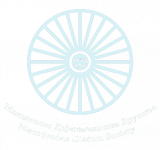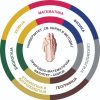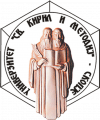Program
Macedonian diatom society
Key note speakers:
Zoologisches Institut, Universität Basel, Basel, Switzerland
Title: Explosive diversification in Darwin’s Dreampond: The cichlid fishes of Lake Tanganyika
Short biography: Walter Salzburger (born in 1975) is a Professor for zoology and evolutionary biology at the University of Basel in Switzerland. The research of Walter Salzburger focuses on the question of how variation in the DNA translates into organismal diversity and on the identification of the patterns and molecular mechanisms that underlie adaptation, evolutionary innovation, and rapid diversification. Salzburger’s main organismal study systems are the exceptionally diverse adaptive radiations of cichlid fishes in the African Great Lakes. He received a Starting Grant (in 2008) and a Consolidator Grant (in 2013) from the European Research Council (ERC) to study the cichlid fauna of Lake Tanganyika.
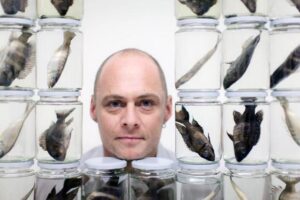
Abstract: Adaptive radiation is the likely source of much of the ecological and morphological diversity of life on Earth. Owing to their spectacular taxonomic, phenotypic, ecological and behavioral diversity and propensity for explosive speciation, the assemblages of cichlid fishes in the African Great Lakes Victoria, Malawi and Tanganyika are prime role models for this evolutionary process. The cichlid fishes of Lake Tanganyika constitute the morphologically, ecologically and behaviorally most diverse cichlid species flocks. Our in-depth examination of nearly all its approximately 250 cichlid species revealed that this spectacular adaptive radiation proceeded in a non-gradual manner, in the form of three consecutive and trait-specific pulses of accelerated phenotypic evolution. In addition, there is evidence that diversification with respect to behavior as well as pigment patterns contributed to the cichlid adaptive radiation in Lake Tanganyika.
Laboratory of Computational and Quantitative Biology of the Sorbonne Université, Paris, France
Title: Understanding the Dark Matter of the Diatom Chloroplast
Short biography: Dr. Richard Dorrell is a group leader at the Laboratory of Computational and Quantitative Biology of the Sorbonne Université, specializing in the evolution of ocean microalgae and their acquisition of photosynthesis. The most important evolution in the history of eukaryotic life forms is the acquisition of chloroplasts by endosymbiosis of primitive cells, resulting in the first microalgae capable of photosynthesis. The main focus of the Dorrell group is on the evolution of these chloroplasts, which can be considered evolutionary “mosaics”, supported by proteins from the symbiont, the host and horizontal transfers. The Dorrell group in particular characterises novel proteins that explain the success of algae in the modern ocean, such as a chloroplast glycolysis pathway and a transporter involved in chloroplast-mitochondrial exchanges. A secondary focus of the Dorrell group is the study of horizontal transfer of genes that help algae adapt to new environments, including the presence of genes unique to the indigenous algae of the Arctic Ocean, and the geographic diversity of algal genomes in an ocean impacted by anthropogenic warming.

Abstract: Diatoms, as photosynthetic eukaryotes, depend on the metabolic activities of their chloroplasts to support their primary production and cellular biology. But what sustains this organelle? The diatom chloroplast is distantly related to that of plants, derived from a secondary or higher endosymbiosis of a eukaryotic red alga, and surrounded by an intricate membrane system that necessarily complicates the import of nucleus-encoded proteome. Identifying what proteins function in the diatom chloroplast, and why, is crucial to understanding their biology, and present-day environmental distributions.
Here, I will discuss a decade of work, using combined phylogeny, meta-genomics, physiology and biochemistry to characterise the unknown components of the diatom chloroplast proteome. First, I will show that the diatom chloroplast is an evolutionary mosaic, supported by nucleus-encoded and endogenous components derived not only from the red endosymbiont, but also the host, and ancestral and progressive horizontal gene transfers from both eukaryotic algal and bacterial sources. I will also show the importance of diatoms for understanding the evolutionary dynamics of other major algal orders, particularly pelagophyte, haptophyte and dinoflagellate algae.
Next, I will outline attempts from my group to place individual proteins that support the diatom chloroplast into a functional and eco-physiological context, particularly using the experimental model Phaeodactylum and global environmental data from the Tara Oceans Expedition. These include : a complete plastidial glycolytic-gluconeogenic pathway of host origin, which may facilitate diatom acclimation to variable day lengths and environmental temperatures ; an unusual homologue of molybdate transporters that localises to the diatom periplastidial membrane and may enable photoacclimation under Fe limitation ; and a distant subunit of ATP synthase subunit A that is broadly shared, but unique to marine eukaryotic algae. Finally, I will consider how characterising the diatom chloroplast proteome may provide clues into algal resilience and fragility to anthropogenic climate change.
Department of Geography, University College London, London, United Kingdom
Title: The palaeolimnological significance of ancient diatoms in ancient lakes
Short biography: Anson Mackay (they/them) is professor emeritus in Environmental Change at University College London (UCL). They have worked on the most ancient of lakes, Lake Baikal, for over 30 years, focussing especially on late Quaternary records of ecosystem change through analyses of sedimentary diatoms and stable isotopes. Anson has also worked on diatoms from lakes and wetlands in Europe, southern Africa and China, to unravel the impacts from climate and anthropogenic change over Holocene and Anthropocene timescales.
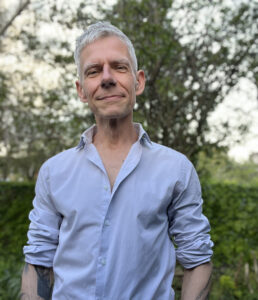
Abstract: In this talk I will discuss how diatoms, often endemic and often extinct, have furthered our understanding of both ancient lake ecosystems in general, and of the interplay between climate and basin morphology in influencing long-term patterns of diatom diversity through time. Recent work has also highlighted the importance of environmental drivers in influencing diatom morphology and ecosystem function through time. Case studies will be drawn on from ancient lakes around the world.
Main topics of the conference:
- Climate change and paleoecology
- Environmental biomonitoring
- Evolution, speciation, phylogeny
- Systematics, taxonomy, floristic
- Biogeography, distribution and ecology
- Diatom applications
| Monday 06.05.2024 | Tuesday 07. 05. 2024 | Wednesday 08. 05. 2024 | Thursday 09.05.2024 | Friday 10.05.2024 |
|---|---|---|---|---|
| 8:00 – 9:15 Registration | 8:00 – 9:00 Registration | 8:00 – 9:00 Registration | 09:00 - 18:00 Workshop |
|
| 9:15 – 13:00 Morning session | 9:00 – 13:00 Morning session | 9:00 – 13:00 Morning session | ||
| 16:00 – 20:00 Registration | 13:00 – 15:00 Lunch break | 13:00 – 15:00 Lunch break | 13:00 – 14:30 Lunch break | |
| 15:00 – 17:00 Afternoon session | 15:00 – 17:00 Afternoon session | 14:30 – 19:00 Excursion | ||
| 17:00 – 19:00 Poster session | 17:00 – 19:00 Poster session | 19:30 – 20:00 Closing remarks | 18:00 - 00:00 Young ISDR networking |
|
| 19:30 – 00:00 Welcome party | 19:30 – 22:00 Gala dinner | 20:00 – 00:00 Social event |

